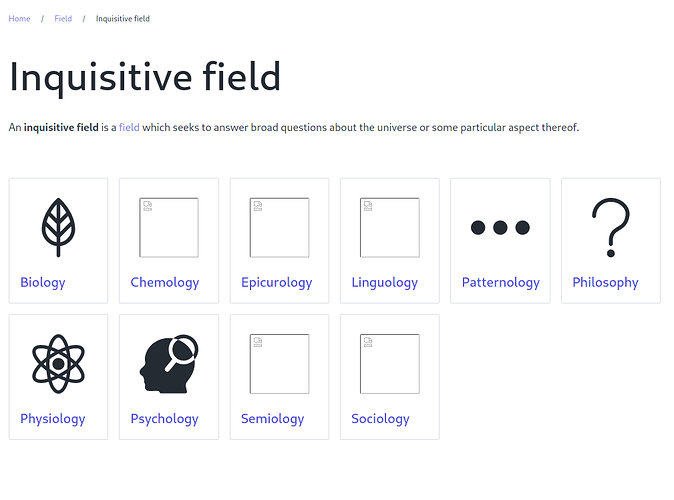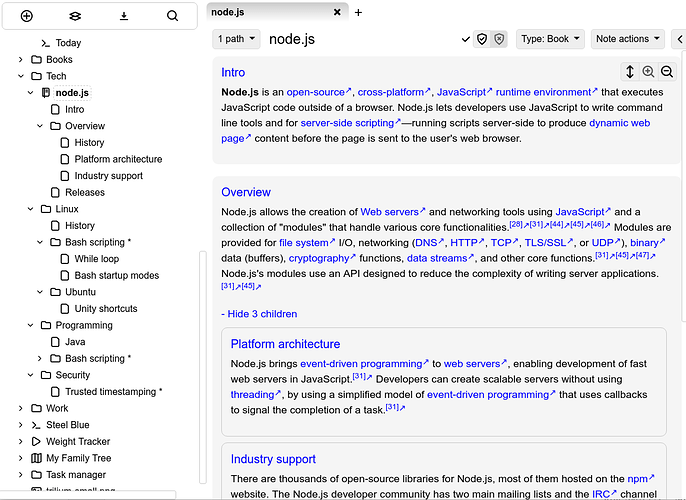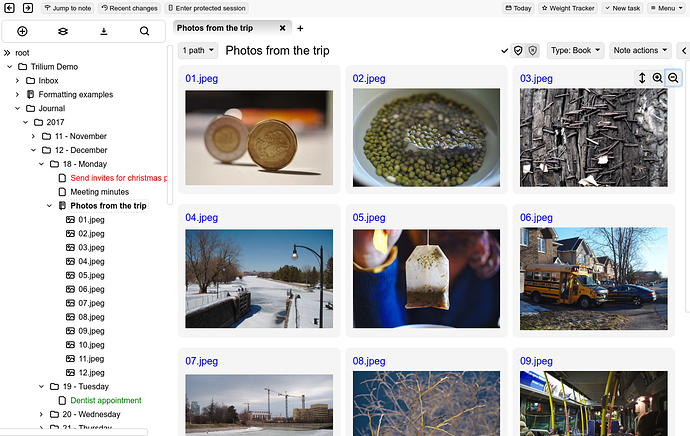This is a screenshot from a duct tape and bubblegum KM solution I built for myself using a flatfile content management system. The cards are populated dynamically by the CMS are are hyperlinks to subpages, which each have a similar layout.
Combined with the breadcrumb up top, they made it very quick and pleasurable to drill down through deep hierarchies, including straight through empty notes.
It would be cool if Obsidian also offered this. Bonus points if the cards can be multiselected and clicked and dragged between other panes and the sidebar to move notes around, or have batch operations applied.
1 Like
Just for clarity: how does this differ from e.g. the backlinks pane?
1 Like
You may also be interested in this web app: https://speare.com It is based on individual thoughts. And it can decompose automatically several sentences in a paragraph into individual sentences.
Trilium notes has this feature in what are called “book notes”. I think they are named that way because the original use case was to compile individual notes about a single book. But it’s basically what the OP is requesting. An additional feature in Trilium is you can change the “zoom” of the notes in the book note to see various levels of detail.
I think it’s an interesting idea, either as a note or a folder view, but I think this would be for a plugin.
https://github.com/zadam/trilium/wiki/Book-note
3 Likes
Backlinks have to do with links made in other notes, and pay no heed to where files are in the filesystem. They aren’t generated automatically from the file/folder hierarchy, like the links in my screenshot are.
In my system, when notes are moved from one filesystem folder to another, their cards will disappear from the old location and reappear in the new one. And subnotes don’t have to link to their parent. Even if I made Inquisitive field an empty note with no link or mention of Field, it would still appear as a card when I visit Field.
1 Like


